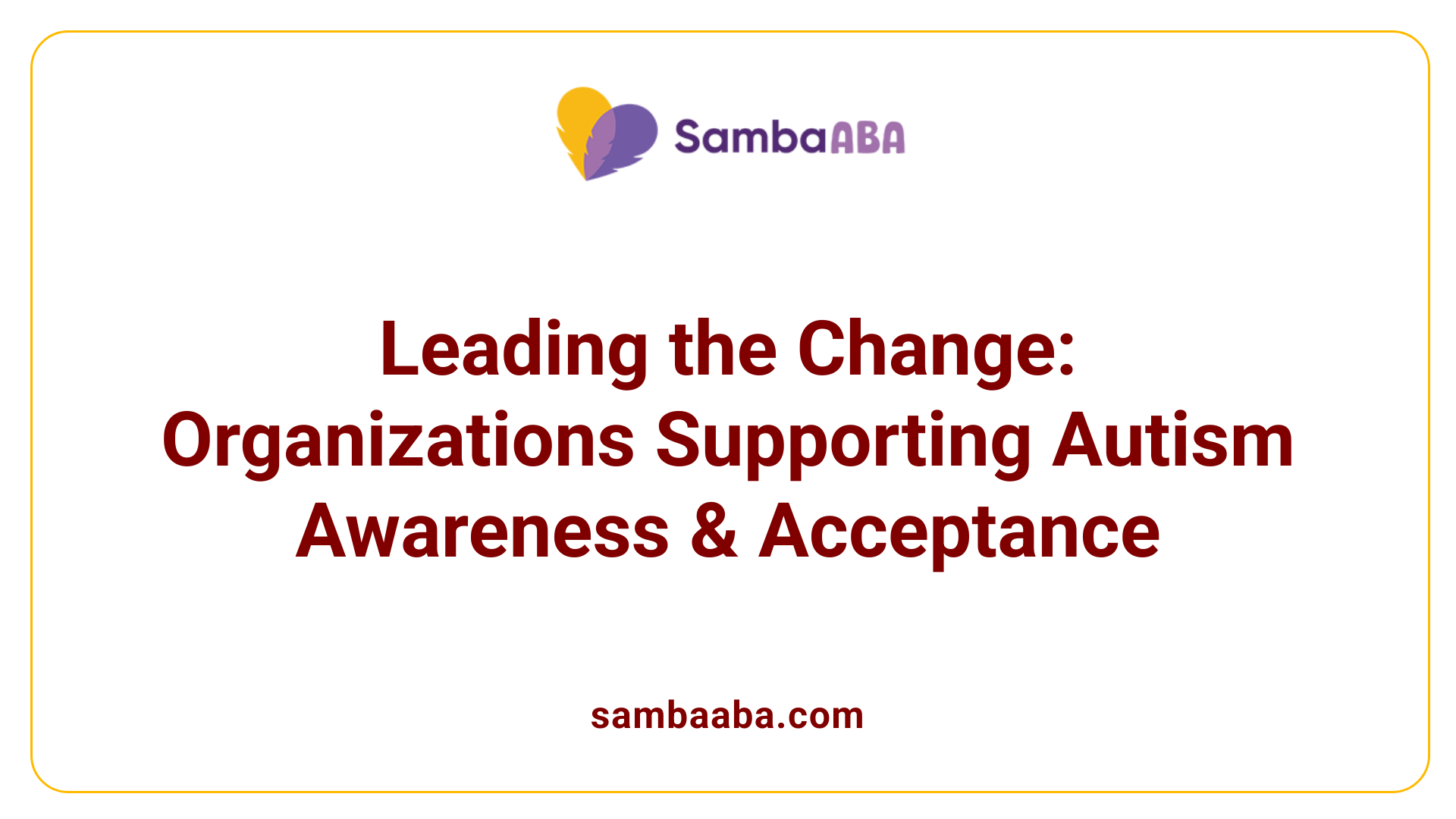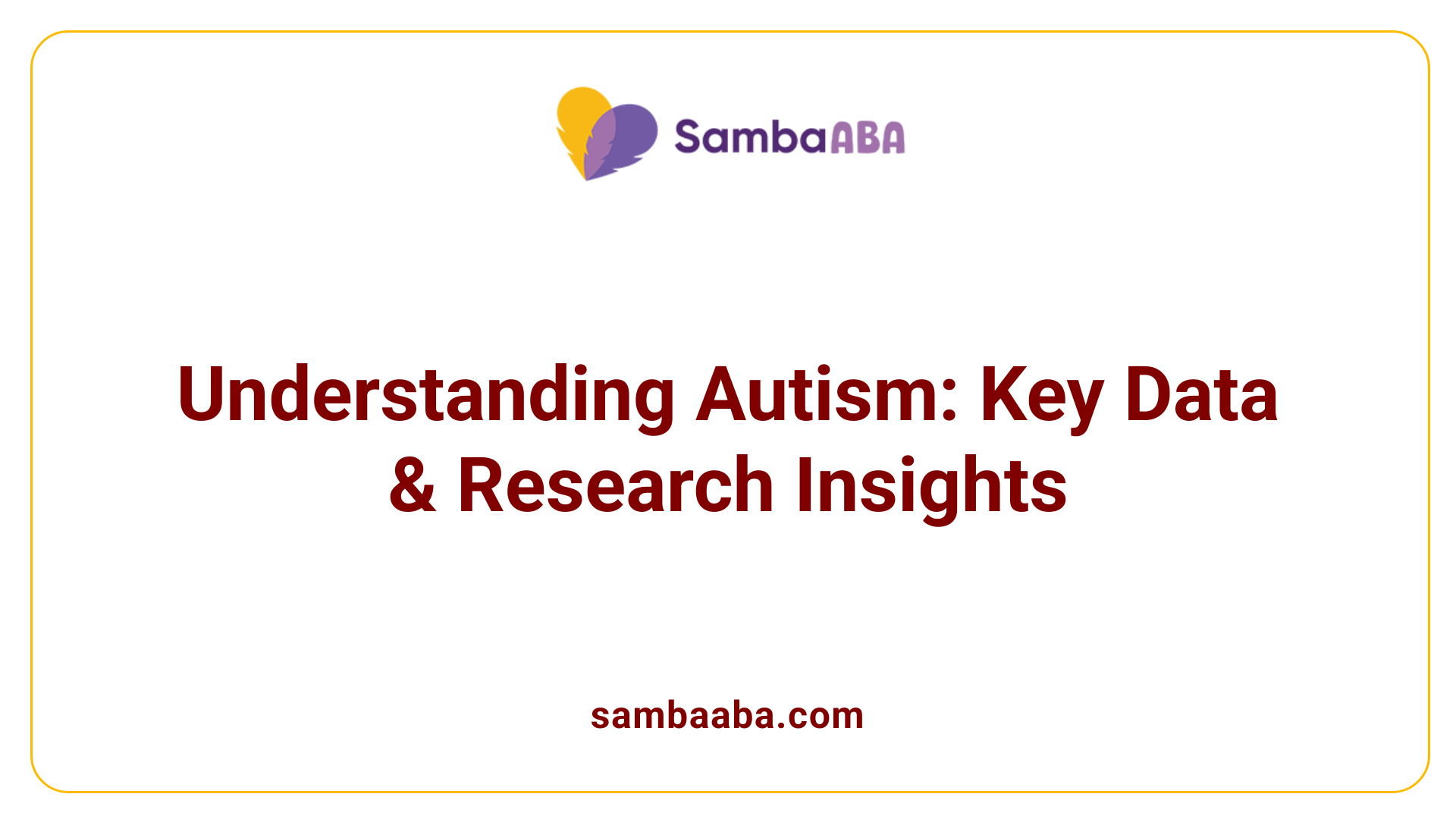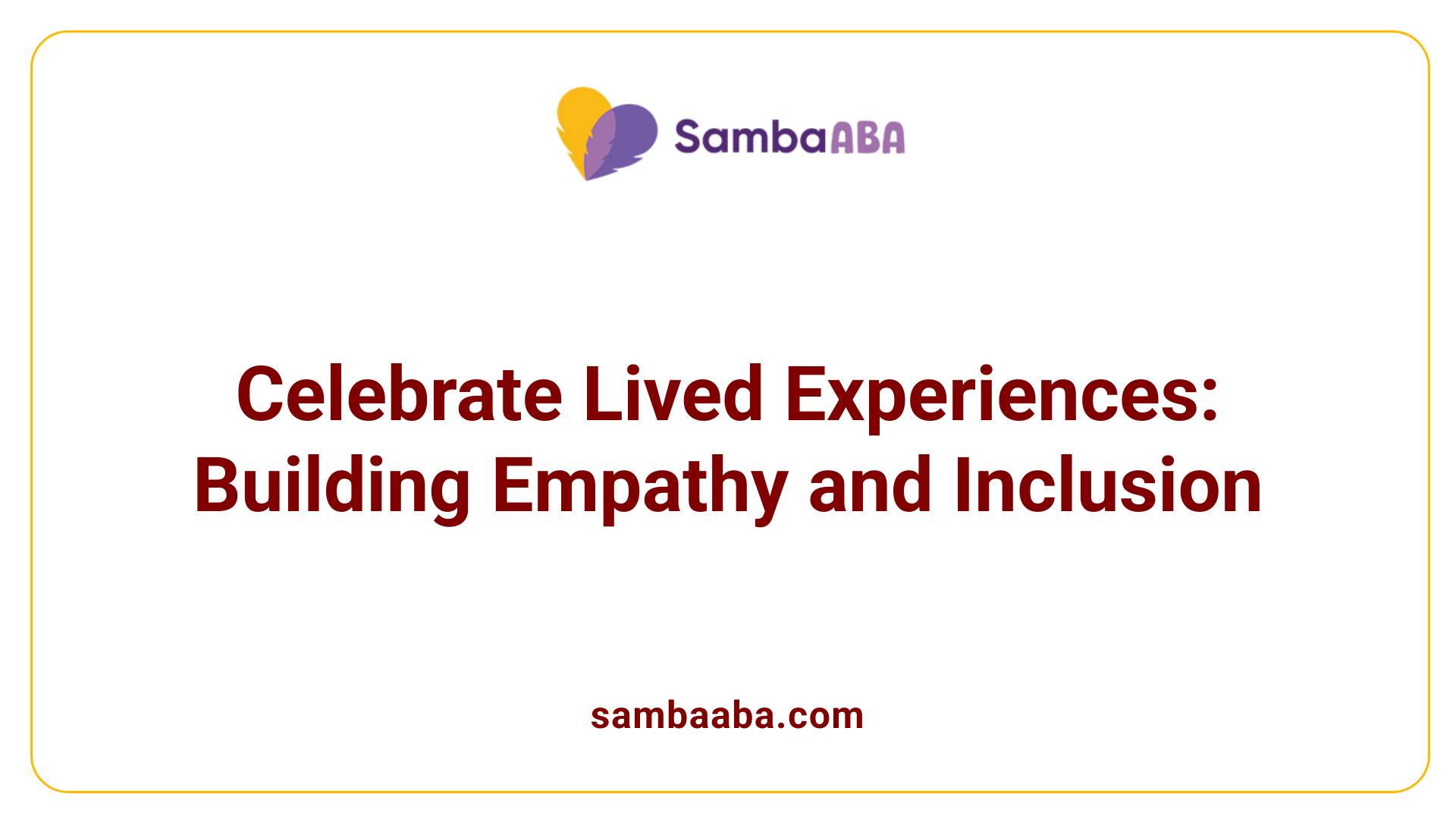Autism Awareness Month
Deepening Understanding and Fostering Acceptance
A Month of Reflection, Action, and Inclusion
April marks a global observance dedicated to autism—an opportunity to educate, advocate, and promote acceptance of individuals across the autism spectrum. Celebrated as Autism Awareness Month, this period encourages society to shift focus from merely understanding autism to embracing neurodiversity and fostering inclusive communities. Through various campaigns, initiatives, and personal stories, Autism Awareness Month aims to break down barriers, challenge misconceptions, and recognize the unique talents and experiences of Autistic individuals.
The Evolution of Autism Awareness and Acceptance

When is National Autism Awareness Month observed?
National Autism Awareness Month is observed annually in April. It aims to increase understanding, promote acceptance, and support individuals with autism spectrum disorder (ASD). The month features prominent activities such as World Autism Awareness Day on April 2nd, adopted by the United Nations in 2007, which highlights autism as a global health concern. Throughout April, various organizations like Autism Speaks and the Autism Society of America organize campaigns, events, and educational programs to foster a broader understanding and acceptance of autism worldwide. These efforts serve to dispel myths, highlight talents within the autistic community, and promote societal inclusion. Overall, April has become a dedicated period for raising awareness, inspiring action, and supporting autism acceptance across the globe.
What is the significance of the color blue in autism awareness campaigns?
The color blue is widely recognized in autism awareness initiatives as a symbol of calmness, understanding, and support for individuals on the spectrum. Its importance was popularized by the "Light It Up Blue" campaign launched by Autism Speaks in 2004, which encourages lighting landmarks, buildings, and personal attire in blue to promote autism awareness. Wearing blue during April, especially on April 2nd, helps create visual solidarity and encourages societal conversations around acceptance and inclusion.
Blue represents a sense of unity and compassion, aiming to foster an environment where different neurological profiles are celebrated rather than stigmatized. Landmark lighting in blue also helps amplify media coverage and community engagement, making the recognition of autism a visible, collective effort. This color embodies a collective call for understanding, acceptance, and societal support, uniting communities worldwide in their efforts to embrace neurodiversity.
How does Autism Acceptance Month differ from Autism Awareness Month?
Autism Awareness Month historically focused on spreading knowledge about autism, emphasizing the characteristics, challenges, and needs of individuals on the spectrum to educate the public. Its primary goal was informing society to foster basic understanding.
In contrast, Autism Acceptance Month, officially adopted in 2011, aims to promote acceptance, inclusion, and genuine understanding of autistic identities. The shift from awareness to acceptance reflects a deeper movement towards recognizing autism as a natural variation of human neurology and emphasizing the importance of respecting autistic voices and lived experiences.
During Acceptance Month, organizations encourage actions such as advocating for inclusive policies, sharing personal stories, and promoting neurodiversity. The focus is on creating environments where autistic individuals are supported, respected, and empowered to lead fulfilling lives. This transition underscores a societal move from simply recognizing autism to actively embracing and celebrating it.
Why is it important to celebrate Autism Awareness Month?
Celebrating Autism Awareness Month is crucial because it helps combat misconceptions and reduce stigma surrounding autism. The increased visibility and education can lead to early detection and intervention, which are critical for helping children reach their full potential. Early diagnosis allows for access to specialized support, therapies, and resources that can significantly improve life quality.
Moreover, awareness campaigns foster community understanding and support for families affected by autism, encouraging societal inclusion and acceptance. It also drives policy changes, promotes research, and increases funding for autism services and education. Ultimately, awareness creates a foundation upon which acceptance and inclusion can be built, making society more welcoming and equitable for autistic individuals.
What are some activities and ways to support autism awareness and acceptance?
Supporting autism awareness and acceptance can take many forms. Some effective activities include participating in community events like sensory-friendly movie screenings or autism walks. Advocating for inclusive policies in schools, workplaces, and public spaces fosters real change.
Sharing personal stories or supporting autism organizations through volunteering, donations, and fundraising helps amplify meaningful voices within the community. Educating oneself using credible sources about autism improves understanding and empathy. Engaging on social media with campaigns and informational posts raises awareness on a broader scale.
Other ways include creating inclusive classroom activities, supporting employment initiatives for autistic adults, and promoting accessible healthcare services. Listening respectfully to autistic individuals' experiences is fundamental. Small actions like wearing autism-themed apparel, displaying symbols such as the puzzle piece, and organizing awareness drives contribute to a culture of acceptance and understanding. Collective involvement leads to societal shifts that value neurodiversity and support full participation for all individuals.
Major Organizations and Their Initiatives

What are some activities and ways to support autism awareness and acceptance?
Supporting autism awareness and acceptance involves a range of community and individual actions. Participating in local events such as fundraisers, educational campaigns, and sensory-friendly activities like movie screenings helps foster understanding. Advocates can push for inclusive policies in schools and workplaces to create more accessible environments. Volunteering with organizations like Autism Speaks or the Autism Society of America provides direct support and visibility.
Sharing personal stories and experiences on social media can combat misconceptions, reduce stigma, and promote empathy. Educating oneself through credible sources about autism spectrum disorder (ASD) and its diversity is essential. Support can also be extended to families by offering resources or joining support groups. Promoting inclusive practices in education, employment, and community life makes a lasting impact. Listening to autistic voices and respecting their perspectives fosters a society rooted in compassion and understanding.
What is the significance of the color blue in autism awareness campaigns?
The color blue has become synonymous with autism awareness, symbolizing calmness, understanding, and solidarity. Its prominence was popularized by Autism Speaks' "Light It Up Blue" campaign launched in 2004, in which landmarks worldwide are illuminated to show support. Wearing blue on April 2nd, World Autism Awareness Day, encourages a unified display of support and helps raise visibility.
Blue's association with autism emphasizes a message of societal acceptance and inclusion. It creates a visual cue that promotes awareness and fosters a sense of community. The widespread use of blue in campaigns, events, and landmarks helps remind society of the importance of embracing neurodiversity. Overall, blue acts as a unifying symbol that highlights compassion, promotes dialogue, and encourages action toward supporting autistic individuals and their families.
Why is it important to celebrate Autism Awareness Month?
Celebrating Autism Awareness Month is crucial because it raises public understanding of autism spectrum disorder, promoting acceptance instead of stigma. It is an opportunity to educate society about the diversity within the autism community and dispel common myths. Recognizing autism also emphasizes the importance of early diagnosis and intervention, which can enhance developmental progress and quality of life.
Awareness campaigns encourage the use of screening tools and biomarkers for early detection, leading to timely support. Additionally, Autism Awareness Month emphasizes the ongoing need for accessible resources, inclusive education, and employment opportunities. It fosters community engagement, inspiring individuals, organizations, and governments to support policies that benefit autistic people.
Leadership by organizations like Autism Speaks and the Autism Society of America ensures that efforts target broader societal acceptance. Ultimately, celebrating this month moves society closer to a future where autism is understood, respected, and accommodated, enabling autistic individuals to lead fulfilling lives and fully participate in their communities.
Research and Data on Autism Spectrum Disorder

What is the significance of the color blue in autism awareness campaigns?
The color blue holds a central position in autism awareness initiatives because it symbolizes calmness, understanding, and unity. Its prominent role was popularized by the "Light It Up Blue" campaign launched in 2004 by Autism Speaks. This campaign involves illuminating landmarks around the world and encouraging individuals to wear blue on April 2, celebrated as World Autism Awareness Day. The use of blue aims to foster a sense of support and solidarity for autistic individuals and their families.
Blue's calming and welcoming connotations help promote societal acceptance and understanding. Its widespread adoption across various campaigns and landmarks worldwide increases visibility, promotes compassion, and emphasizes the importance of inclusion and neurodiversity. This unifying color helps rally communities globally, making a powerful visual statement about embracing differences and advocating for better acceptance.
What is the difference between Autism Acceptance Month and Autism Awareness Month?
While both observances take place in April and aim to promote a better understanding of autism, their focus differs significantly.
Autism Awareness Month concentrates on educating the public about autism — its characteristics, challenges, and needs. It aims to inform society and dispel misconceptions, ensuring that people gain a clearer understanding of what autism entails.
In contrast, Autism Acceptance Month emphasizes respect, inclusion, and support for autistic individuals. It recognizes autism as a natural part of human diversity and advocates for creating environments where individuals can thrive without stigma. This shift from awareness to acceptance encourages society to move beyond just knowing about autism — to actively support and celebrate the lives and talents of autistic people.
Organizations such as the Autism Society of America and the Autistic Self-Advocacy Network promote this inclusive approach. During Acceptance Month, campaigns focus on personal stories, neurodiversity, and advocacy efforts that empower autistic voices.
This evolution reflects a broader societal goal: fostering respectful understanding and meaningful action to improve the quality of life for individuals on the autism spectrum.
What is the prevalence of Autism Spectrum Disorder?
Understanding how widespread autism is helps underline its importance as a public health and societal issue. According to the CDC, approximately 1 in 36 children in the United States has been diagnosed with ASD as of 2023. This statistic highlights a significant increase from earlier estimates and underscores the importance of early detection and intervention.
ASD affects individuals across all racial, ethnic, and socioeconomic groups, making it a universal concern. Boys are nearly four times as likely to be diagnosed as girls, reflecting differences in developmental presentations or possibly in diagnostic practices.
How does research support understanding autism?
Research initiatives like those conducted by the CDC play a crucial role in understanding autism's epidemiology and characteristics. The CDC’s Autism and Developmental Disabilities Monitoring (ADDM) Network tracks autism prevalence and traits across various populations, providing vital data that guide public health responses.
Another significant project, the CDC’s Study to Explore Early Development (SEED), investigates how autism develops from childhood into adolescence and adulthood. These studies inform support strategies, help identify risk factors, and improve early diagnosis techniques.
The CDC emphasizes early screening through well-child checkups, typically at 9, 18, 24, and 30 months, aiming to detect signs of autism as early as possible. Early diagnosis allows children to access behavioral health services that can improve their functioning and participation in daily life.
Autism symbols and campaigns
A notable symbol associated with autism is the Puzzle Piece, introduced in 1963 by the National Autistic Society. It represents the complexity and diversity of the autism spectrum, as well as hope, strength, and community. Since then, campaigns like Autism Speaks’ "Light It Up Blue" have utilized symbols and colors to galvanize support.
In conclusion, ongoing research and dedicated awareness campaigns have significantly increased public understanding of autism. They emphasize early detection, promote acceptance, and celebrate the talents and contributions of autistic individuals.
| Aspect | Details | Additional Information |
|---|---|---|
| Prevalence | 1 in 36 children in the U.S. | Driven by CDC data, with rising trends |
| Screening | Recommended at 9, 18, 24, and 30 months | Early detection improves outcomes |
| Research | CDC’s ADDM and SEED studies | Guide policy, diagnosis, and support |
| Symbols | Puzzle Piece, Blue color | Promote awareness and unity |
| Campaigns | Light It Up Blue, Autism Acceptance | Foster inclusion and understanding |
| Impact | Increased awareness, better services | Underpinning societal change |
The Role of Personal Stories and Community Engagement

How does Autism Acceptance Month differ from Autism Awareness Month?
Autism Awareness Month is primarily focused on increasing public understanding of autism by sharing information about its characteristics, challenges, and the needs of autistic individuals. Its goal is to educate society and raise visibility around autism. In contrast, Autism Acceptance Month emphasizes active support, inclusion, and understanding. It recognizes autism as a natural part of human diversity and encourages efforts to foster respect and rights for autistic people.
Acceptance involves creating an inclusive environment where autistic individuals feel supported and valued. To achieve this, organizations promote advocacy campaigns, share personal stories, and endorse neurodiversity. The shift from awareness to acceptance reflects a desire to inspire societal action that embraces differences and promotes genuine inclusion, rather than just informing the public.
While awareness seeks to inform and reduce misconceptions, acceptance aims to build empathy and support policies that ensure autistic individuals lead fulfilling lives. During this month, community efforts are directed at breaking barriers and creating opportunities for meaningful participation in all aspects of life.
What kinds of community activities help promote autism acceptance?
Community involvement plays a crucial role in fostering an environment of acceptance. Effective activities include hosting sensory-friendly movie screenings, autism walks, and educational fairs that promote understanding and inclusion.
Workshops and training sessions tailored to teachers, employers, and community members equip them with skills to support autistic individuals respectfully. These training programs emphasize effective communication and the importance of supportive spaces.
Personal storytelling events are particularly impactful. Allowing autistic individuals and their families to share their lived experiences helps dispel stereotypes, encourages empathy, and highlights strengths. Such personal narratives can change perceptions by illustrating the diversity and richness of autistic experiences.
Creating resource centers and support groups provides ongoing assistance, empowering families and individuals to navigate challenges and advocate for their needs. Educational initiatives, such as art shows, awareness campaigns, and social media drives, amplify messages of acceptance and showcase the talents within the autism community.
Partnerships with local businesses and organizations further extend the reach of acceptance efforts. These collaborations can lead to more accessible, welcoming environments—like sensory-friendly spaces, employment opportunities, and inclusive community events. Overall, these activities help cultivate a society where autistic individuals are valued, supported, and fully included in community life.
The power of lived experiences in fostering understanding
Personal stories from autistic individuals and their families are vital tools for fostering understanding. These narratives provide authentic insights into daily life, challenges, and triumphs, which statistics and facts alone cannot fully convey.
Such stories humanize autism, helping community members see beyond stereotypes and recognize the unique strengths each person brings. By sharing their experiences, autistic individuals can challenge misconceptions, reduce stigma, and promote empathy.
Organizations and community groups often facilitate storytelling events, forums, and online campaigns to highlight diverse voices. These initiatives encourage dialogue and personal connection, making autism more relatable and understandable.
Furthermore, lived experiences inspire advocacy and policy change. When communities hear directly from those affected, they are more likely to support inclusive policies, accessible services, and respectful attitudes.
In summary, personal stories and active community participation are powerful forces in building a society that not only understands autism better but also accepts and celebrates it. Through shared experiences and inclusive activities, communities create environments where everyone has the opportunity to thrive.
Moving Forward with Acceptance and Understanding
Autism Awareness Month serves as an essential reminder of the ongoing journey toward greater understanding, acceptance, and inclusion of Autistic individuals. While the campaigns and symbols like the color blue have effectively raised awareness, the true goal is to foster societal acceptance and embrace neurodiversity as a natural, valuable part of human experience. Initiatives led by organizations like Autism Speaks and the Autism Society of America underscore the importance of advocacy, community engagement, and listening to Autistic voices. As society continues to evolve, the focus must shift from awareness to acceptance, ensuring that every person with autism is supported, respected, and empowered to lead fulfilling lives. Through education, compassion, and action, we can create a world where neurodiversity is celebrated and everyone is included.
References
- World Autism Month - Autism Speaks
- Autism Acceptance Month - Autism Society
- Autism Acceptance Month: Celebrate Differences - The Arc
- Autism Partner Toolkit | Autism Spectrum Disorder (ASD) - CDC
- Autism Acceptance Month: The History and Impact - Neurology Advisor
- World Autism Awareness Day
- Autism Acceptance Month 2025 - Cerebral Palsy Guide
